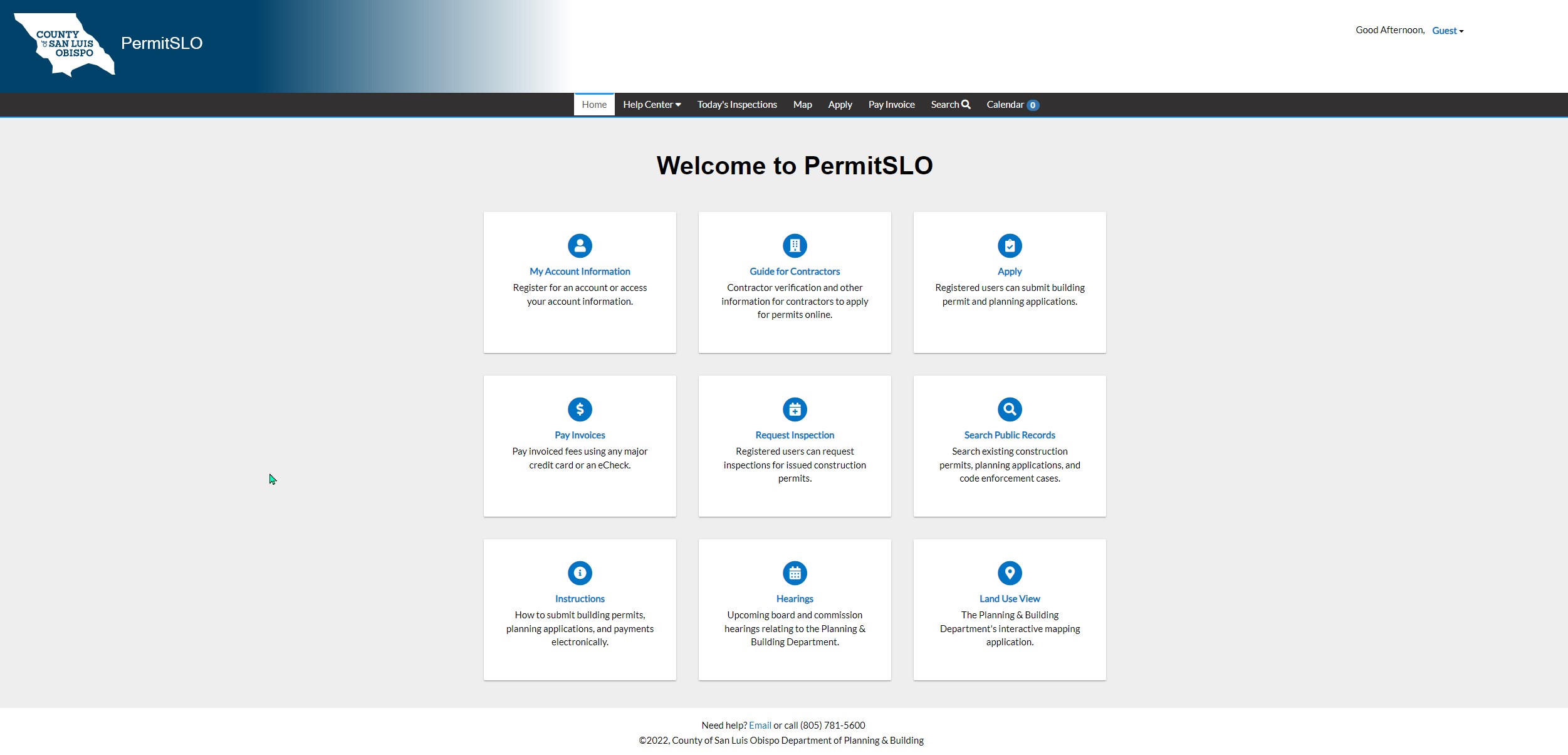Conditional Use Permit / Coastal Development Plan
A Conditional Use Permit, and Coastal Development Plan, is a discretionary permit, acted on by the Planning Commission, allowing a specific land use. Approval of a land use permit only entitles the use itself; separate permits may also be required for any construction or grading activities.
What is the process?
Step 1: Schedule Pre-Application Meeting (Optional)
A pre-application meeting is intended to aid prospective applicants in understanding the required rules and regulations that apply to their project and to reveal potential problems. The goal of providing a pre-application meeting is to make the permitting process as efficient and understandable as possible. These meetings are typically optional. If the applicant chooses to utilize this process, there is a separate fee that must be paid prior the meeting.
Schedule a Pre-Application Meeting.
Step 2: Complete an Application Package
Complete the Attachments Required for an Online Submittal.
Step 3: Apply Online
Please apply for a conditional use permit or coastal development plan through the online service PermitSLO.
- To apply online, click Land Use Permit Application
- Click Apply
- Login by providing your email address and clicking "Next", or "Create an account", if you are a new user.
- Follow the step-by-step instructions.
- Upload the Attachments Required for a Conditional Use Permit or Coastal Development Plan Online Submittal before clicking Submit.
***Digital Copies are now required with submission***
Planning staff will look over the application submittal package and contact the primary contact with any questions.
Step 4: Pay Invoice
Staff will email the billing contact an invoice. Pay invoice here* on PermitSLO.
Once the invoice is paid, the project review timeline will begin.
Please note for all Planning and Building applications, after 15 days of non-payment of invoice, the application will be voided and resubmittal will be required.
Step 5: Application Completeness Review
Department of Planning & Building staff reviews the application for consistency with applicable land use regulations. An application may be deemed incomplete and require additional information, and an information hold letter will be sent to the applicant, or authorized agent for the applicant. If the application is complete, the application will be accepted as complete for processing.
Step 6: Environmental Review
Environmental Review will occur, and additional fees will be invoiced.
Step 7: Schedule Hearing
Staff schedules the application for a public hearing with the Planning Commission.
Step 8: Reach Decision
During the public hearing, the hearing body considers the application and reaches a decision to either approve, conditionally approve, or deny the application.
Step 9: Appeal Hearing (If Needed)
Any person can appeal a decision to the Board of Supervisors. Projects located within the Coastal Zone can be appealed to (or by) the California Coastal Commission.
Step 10: Record Agreements
Depending on the conditions of approval, the applicant may be required to enter into one or more legal agreements.
Step 11: Extend Approval (Optional)
The applicant may apply for a time extension to extend the approval date for one year. The maximum available time extensions are based on the land use entitlement type.
Step 12: Proceed with Entitlement
Approval of a land use permit only entitles the use itself. This approval includes conditions (such as requiring additional approvals from other agencies) and possible mitigation measures that the applicant must comply with. Because only the use is entitled with approval of a land use permit, any construction or grading is subject to separate permits.
Is there a charge for this service?
Please refer to the Department of Planning & Building Fee Schedule for application fees.
When and where is this service offered?
This service is available throughout the year during regular business hours except during scheduled holidays.
Location, directions and hours of operation
Click on location name to show hours of operation, directions and phone information
Monday - Friday 8:30 AM - 4:30 PM
976 Osos Street Room 200
San Luis Obispo, CA 93408
Tel: (805) 781-5600
Fax: (805) 781-1242
Permits/Inspections: (805) 788-6602
FAQS
A Surface Minning and Reclamation Plan is also a Conditional Use Permit, acted on by Planning Commission, allowing the mining of surface materials from a site and requiring the reclamation of the site after the mining is completed.
The definitions of the various planning permits are provided on the Land Use Entitlements page.
Ultimately, the use proposed by a land use permit application must be consistent with applicable land use regulations, including but not limited to the County's General Plan, land use ordinances (inland or coastal), and any applicable area and community plans.
There are a number of issues you should consider when developing your project and preparing your application, including:
- Is my proposed use allowed in the area where it is being proposed?
- Are there specific standards that apply to the property?
- What permit fees are required to be paid?
- What types of permits may be required?
- Will my proposed use raise any environmental concerns?
- Is the property near any known hazards?
- Are utilities available to serve my proposed use?
- Are existing roads adequate to serve my proposed use?
- Are there adequate fire safety provisions for my proposed use?
The County, through adoption of various ordinances, has determined that there are certain types of uses that may have an impact on the area in which they are located. These types of uses require the approval of a land use permit, which sets conditions for the use's establishment and operation.
Land use regulations are important because they determine where particular uses can be allowed and what requirements must be met and procedures be completed before a particular use is allowed.

